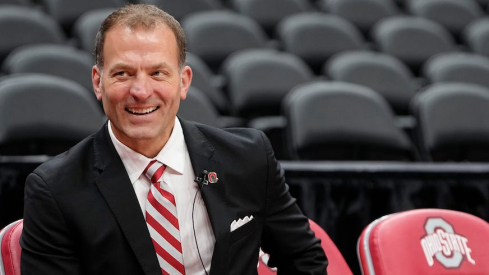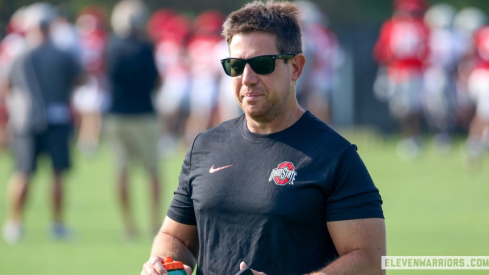
Continued from Part I :
The Chinese have always been an intensely proud people, able to trace their society back over a 3,000 year period during which they were usually the most powerful and advanced culture on the planet. They invented automatic crossbows, the printing press, gunpowder, the compass, and many other technologies centuries before their counterparts in the Europe. In fact, a Chinese expedition was sent to make contact with their Roman contemporaries during the late 1st century CE. They numbered in the tens of thousands and made it all of the way to the Persian Gulf. They only turned back when the Persians, fearful of losing their monopoly on the silk trade, told the Chinese expedition leader that he was thousands of miles from Rome when in fact they were only a few months away.
Over a thousand years later the century-old Yuan Dynasty, established by the son of Genghis Khan, fell as the native Han revolted against their foreign leaders. The newly established Ming Dynasty ruled for 3 centuries, dwarfing any other civilization in size or splendor. In the early 1400s, when Portugal was sending its first furtive explorers in a handful of boats housing a couple hundred men down the Moroccan coast, the Ming were exploring west Africa with colossal treasure fleets manned by 30,000 men and laden with gold and jewels to show the might of the Chinese Empire. From the Japanese islands to India to Egypt, China held sway.
In many ways it was her pride that gave China its ability to influence the world. This sense of its worth provided the Ming leaders with the motivation and desire to explore the world and spread Chinese culture. Confucianism, the state ideology of China at the time, emphasizes the value of tradition. The community is organized as a unit, with tradition dictating role and status. Confucianism glorifies the butcher, the emperor, the street sweeper, and the housewife so long as they strive to succeed within their place, rather than attempt to usurp an improper role. People were immensely proud of their small part in the larger fabric of society.
But pride is a fickle thing. Without it, we struggle with even the most menial tasks, ravaged by self-doubt. Yet too much, and we become blind to reality and consumed by our own inflated self-image. Finding the right balance of pride and self-criticism is something many of us will go our entire lives without managing. As with China, our outward expression of pride comes in the form of tradition. We do what we’ve done because we’ve always done what we do. A tradition’s raison d’etre lies in its embodiment of a community’s pride, for in many ways we celebrate who we are by celebrating who we were. The sense of continuity that tradition provides helps to reassure us that what we do has meaning, and this sense of meaning makes us proud to be a part of something important and timeless.
However, tradition also ossifies habits and mentalities which were often adopted for largely arbitrary reasons. Why does Ohio State wear Scarlet and Gray? Apparently they were picked because Orange and Black were already chosen while Scarlet and Gray were available and not ugly. Yet the thought of Ohio State taking the field in any other colors is not merely offensive but anathema to any Buckeye fan. This isn't a bad thing, on the balance, but there's nothing intrisically awesome about colors (Of course, you could have intrinsically ass-ugly colors like Oregon or Syracuse). Over time, the colors became a part of who Ohio State is. On the other hand, the BCS and the bowl games enjoy the entrenched support of traditionalists within the administrations and alumni, blocking efforts to institute a true playoff. They cling to their position with arguments for tradition, when almost everyone can see the inherent flaws of the system. Thus, as any community moves forward in an ever-changing world, it’s important to determine which traditions give it identity and which hold it back from progress.
Ming China, after exploring half of the planet, later decided that, as the pinnacle of civilization, they had nothing to gain from the outside world. She recalled her fleets, shut down her trade ports, and expelled foreign merchants. As a result, China froze in place for two centuries before being conquered by the Manchu, relatives of the Mongols. By that time, China had fallen too far behind the Europeans, and though her wealth and culture still outshone anything in the west, China's pride prevented it from adopting western technology and ideas until it was too late. Only now is China fully recovering from the damage caused by its excessive pride and faith in tradition.
Why the big ten struggles
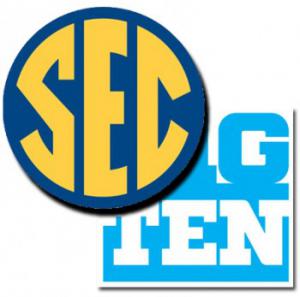
Last week, I showed some statistics illustrating why the two most common reasons given for the Big Ten's struggles are overblown. If race and demography were the most important factors for success, than the ACC would be counting their 10th straight title. Yet even if the Big Ten isn't losing ground in population, it's still clearly the case that the SEC has established itself as the top conference in college football over the last 5 years. The question is why has the SEC done so and not the Big Ten?
It's important to note that it was not the case that the SEC was dominating the football landscape 15 years ago. Tennessee was a powerhouse and Florida had its moments, but by and large the SEC was a non-entity throughout much of the 90s. If we're going to answer why the SEC is winning now, we have to determine what changed between 1995 and 2005 as well as what hasn't.
As we've seen, the population hasn't changed enough to be relavent. Likewise, until next year, conference affiliation has remained largely unchanged, with the notable exceptions of Florida State, Virginia Tech, and Miami moving to the ACC. The South was warm and the North cold in the 90s, as far as I can remember. Basically, nothing outside of the programs themselves has changed to any meaningful extent over the last 20 years. The weather, population, conference landscape, and geography are all pretty much the same. This suggests that none of these are contributing to the disparity in results. The areas that have changed, however, are rather striking.
You'll often hear people discuss the weather non-recruiting terms, arguing that southern high schools have more time to practice, more traveling teams, and so on. Unlike baseball, this is not a major factor in football recruiting. Football season begins in the summer, and ends in the winter. Thus, since athletic teams front load their practice schedule, the bulk of the time spent practicing is in July, August, and September. In reality, these are probably better months for practice in Ohio than Florida. Running around in 107 degree heat with 70% humidity doesn't make you tough, it gives you heat stroke. The truth is that the disparity comes down to one major factor: money.
Coaches salaries have been on a rather dramatic climb for a long time now, but that trend accelerated markedly over the last decade. In 2001, the highest paid coach was Steve Spurrier at Florida, earning $2.1 million. Now, it's Nick Saban at Alabama earning $5.2 million. That's a 100% increase in 10 years, well above inflation and GDP growth. Notice that in both cases the top earner was from the SEC. There is a major difference between 2001 and 2011, however:
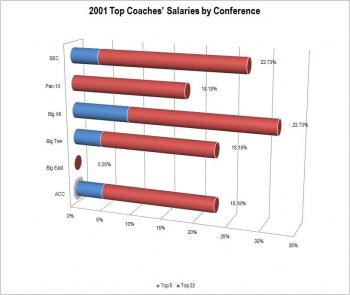
As you can see, in 2001, the SEC was not particularly more willing to pay top dollar for their coaches. The Big XII was the leader is this regard, while the Pac-10 lagged slightly behind. Then as now, the Big East expected their coaches to work for coffee and coupons to Golden Corrall. The Big Ten's most generous were Wisconsin and Minnesota for Alvarez and Glen Mason, respectively. Notably absent is rookie Jim Tressel. The SEC paid Steve Spurrier, then of Florida, a College Football highest $2 million, while Texas and Oklahoma both cracked the top 5 in their compensation to Stoops and Brown.
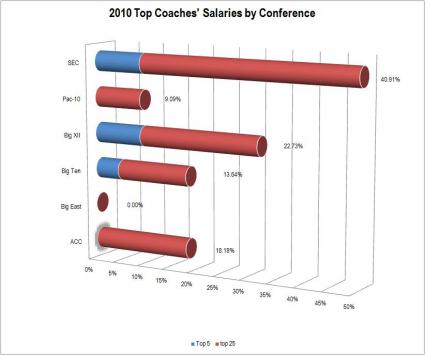
Fast forward ten years and the picture has shifted quite drastically. The SEC is the overwhelming leader in top-dollar coaches, with Megalomaniacal Dwarf Nick Saban earning an astonishing $5.2million. Tressel is now the 2nd best compensated coach in the Big Ten, while Ferentz is the Big Ten's lone representative in the top 5. Texas and Oklahoma
still occupy the top-5 and still own about 1/5th of the spots. Meanwhile, the Pac-10 and Big Ten fail to keep up with the escalating compensation arm's race. The Big East, as ever, hardly matters.
USA Today offers a further illustration of the pay-deficit facing the Big Ten by looking at the average salary for each conference below. The Big Ten seems to pay their bottom feeders slightly better than the ACC, given that the ACC has more top-25 coach salaries yet a lower average. Yet we fall third in the pecking order, nonetheless.
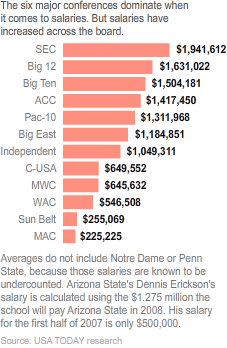
The lengths a university goes to compensate their coach is likely the best measure of both the quality of the staff as well as the administration's commitment to success. An athletic department willing to shell out massive amounts of money is almost certainly more committed than one who pensively signs the more fiscally responsible option. Likewise, top coaches command top salaries. Furthermore, a school willing to drop $4million dollars on their head coach is more likely to spend money to bring in top tier assistants as well, and on down the line to the lowly physicians. As long as the SEC pays 25% higher wages, it'll likely attract higher calibre coaches.
The overriding thing to consider is that the fundamental difference between the SEC and Big Ten, as constituted, lies not in their respective talent bases, but in their respective administrations' willingness to pay for success. I.e. while it's true that the SEC puts out slightly higher rates of D-I quality players per capita (a result, in my opinion, of both a more extensive football culture among high schools and higher rates of poverty, both pushing kids towards sports), that's more than compensated by the Big Ten's significantly larger population base. The Big Ten has more D-I programs per state that the SEC, yet still manages to fill it's rosters with primarily local kids and owns a nearly .500 record against the SEC in bowls. This despite usually being forced to travel much further than their opponents and facing a difficult bowl schedule.
Finally, while it seems arrogant and immaterial to other fans, the Big Ten really does emphasize academics and the student athlete to a far higher degree than is true in other conferences. I won't go into the oversigning controversy, as it's been more than adequetly covered elsewhere, but that certainly provides a competitive advantage to those coaches who use it. The cultural difference is even deeper than oversigning, however. Yet again, USA Today has a chart which breaks down how much of an average coach's contract is academic incentives in each conference. The Big Ten is far and away the leader here, while the SEC falls towards the back and the Big XII brings up the rear. Keep in mind that when accounting for the academic incentives, the Big Ten pays even less to coaches for winning football games than the charts above show, while the SEC and Big XII's advantages are even larger.
So why did this happen? What changed between 2001 and 2011 that allowed the SEC to outspend the rest of the country by such a large margin while the Big Ten fell behind?
why and how the big ten will prosper

When it comes to coach salaries, especially with long terms and massive buyout clauses, on some level the schools are paying a lot now in the hope that it will lead to exponentially increasing returns in the future. In the 20th Century, television contracts were a pittance compared to where they are today. The SEC's buying spree is in large part financed by the TV contracts they signed at the turn of the millenium, when other conferences were still largely playing catch up. Now, however, that ground has shifted. The Big Ten owns a majority stake in it's own network, as well as lucrative contracts with ABC/ESPN. The Pac-12 is likewise drastically increasing their financial situation, and the ACC is maneuvering that way as well.
In the mid-90s, the SEC and Big Ten had largely achieved fiscal parity. By 2002, in large part on the strength of the SEC championship game, a gap had formed between the two conferences. Today, that gap is essentially gone, and may even be opening in favor of the Big Ten. The much larger Q-rating of the Big Ten, with alumni and fans spread across the country and 25+ million more residents in the states, makes the long-term trends bend even more in favor of the Big Ten.
Still, fundamentally it comes down to pride. The SEC has found success largely because they pride themselves on their football prowess more than any other conference. They are willing to spend more, risk more, for that success. The question is how the Big Ten will respond.
One might say we should abandon our traditions and emulate the SEC. Lower our emphasis on academics, buy mercenary coaches, and repeal our prohibition on oversigning. College Football is a business, after all, and no amount of academic window dressing will change that. Oregon, Oklahoma State, Utah, and Boise State all prove that the only tradition that matters is a tradition of winning. This is certainly possible.
One could also say that the answer is to double down, dig in our heels, and stand athwart history yelling, "Stop!" The BCS is an abomination, and the SEC have no integrity, why not move to return to an earlier, simpler time? Pac-10 vs. Big Ten Rose Bowls, coaches who don't make more than the entire faculty combined, old ladies being helped across the street! Apple pie and segregation and all that.
Rather than tossing aside who we are or clinging to tradition for the sake of tradition, it seems obvious that in order for the Big Ten to thrive it must carefully navigate between these two extremes. The Big Ten draws strength from its reputation as a the elder conference. It defines us in a way that no other conference can claim. Academics, tradition, and athletics are all intimately intertwined. Throwing away the uniforms, the pageantry, the academic prestige, and everything else for fifteen Nike variations and a 5* Juco would have us competing on grounds we're not familiar with. Instead, the Big Ten should move full-speed ahead on the institutional progress that seems constantly under assault by the reactionary powers that be. Push for a playoff, a rule against oversigning, the elimination of NLOIs, and all of the other myriad abuses and relics that plague the sport.
The Big Ten, under a sustained psychological barrage for nearly a decade, has entered a malaise. An empire in crisis, we've become bogged down with tradition while losing our sense of self-worth. If there's one thing I can admire about the SEC, it's their "we're all in this together" attitude, a sorely lacking sentiment in our own conference. As a community, we can't rest upon the past, as Notre Dame has kindly proven time and time again. The key is to keep hold of those things that make the Big Ten the Big Ten while moving forward and embracing change everywhere else. The only way forward is forward. Hopefully Jim Delaney and the university presidents understand this. The last few years have seen expansion, the Big Ten Network, and other major changes, positive signs for the future. It's up to the fans, however, to pressure the powers that be and ensure that the next decade belongs to the Big Ten.
